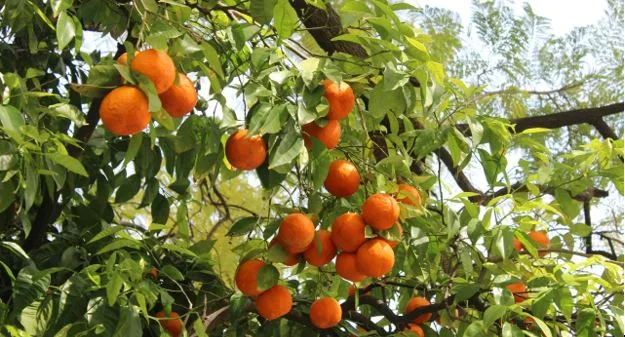Fruit Tree Pruning Myths That Are Ruining Your Harvest
Growing fruit trees in San Diego should feel joyful, grounding, and abundant. But most homeowners unknowingly lose half their harvest every year because of common pruning myths that simply won’t go away. As Fruitmommy, I visit yards across the county every week — from Encinitas to El Cajon — and I can tell you with absolute confidence: pruning is the single most misunderstood part of fruit tree care.
Let’s clear the air — and help your trees thrive.
Why Pruning Is the Foundation of a Healthy, Productive Tree
Pruning isn’t about cutting branches. It’s about directing energetic flow from the roots to the apical tips, opening up the canopy for sunlight, preventing fungal disease, and creating strong fruiting wood. When pruning is done correctly, a tree responds almost immediately — often within 48 hours once nutrients are added.
When done incorrectly?
You’ll see dieback, blackened branches, yellow leaves, pests, mold, and extremely low fruit yield.
Myth #1: “If I prune, my tree will produce less fruit.”
This myth is responsible for more sad, overgrown San Diego fruit trees than I can count.
The Truth:
Pruning actually increases fruit yield — dramatically.
When a tree isn’t pruned, it wastes precious energy growing tall, leggy, and crowded. The result?
- Small fruit
- Dry fruit
- No fruit within reach
- Branches that snap under weight
- Energy starvation at the tips
What really happens when you don’t prune
The tree becomes a tangled web of unproductive wood. Sunlight can’t reach the interior. Fungus thrives. Bugs hide. And your harvest shrinks year after year.
That’s why winter pruning is so important: it creates next year’s fruiting wood and directs the tree’s energy into producing big, beautiful harvests.
Myth #2: “I should prune in spring when everything is waking up.”The danger of spring pruning
Spring pruning of stone fruit is one of the fastest ways to invite fungal infections like Peach Leaf Curl, which thrives in cool, moist weather.
Why winter pruning is superior
Winter is when the tree is dormant — pruning at this time gives it:
- A clean architecture
- Maximum sunlight exposure
- A strong framework for fruiting
- Protection through copper fungicide immediately after cuts
At Fruitmommy, every winter pruning service includes free organic copper fungicide because the cuts act like an open door for disease.
Myth #3: “Topping a tree keeps it small and manageable.”
This is the myth that kills trees.
Why topping destroys a tree’s energy system
Topping removes the apical tips — the very points that regulate growth hormones and energy flow. The tree panics, sending out weak, rapid shoots called watersprouts. These branches:
- Produce little to no fruit
- Drain the tree’s energy
- Create dangerous structural instability
- Invite pests
Corrective pruning is the only path back.
Myth #4: “Thick, bushy trees are healthy.”Density creates disease
I understand the instinct — more leaves = more photosynthesis, right?
But with fruit trees, density is the enemy.
A dense canopy traps moisture, blocks sunlight, and creates the perfect environment for:
- Black sooty mold
- Scale insects
- Aphids
- Mites
- Fungus
Fruit trees need openness. Sunlight should reach the interior — one of the key principles we teach clients during home consultations.
Myth #5: “Any landscaper can prune fruit trees.”
Why this is almost never true
Fruit tree pruning is not the same as ornamental pruning. It requires:
- Understanding energy flow
- Creating fruiting wood
- Managing tree architecture long-term
- Knowing how each species responds
- Timing based on microclimate (San Diego’s marine layer matters!)
Generic landscaper cuts often cause:
- Dieback
- Starvation
- Poor fruiting
- Permanent structural problems
At Fruitmommy, corrective and artistic pruning is one of our most requested services because 9 out of 10 trees we encounter have been pruned improperly.
Myth #6: “Bigger branches = more fruit.”The Truth:
Fruit grows on young, energized fruiting wood, not old thick branches.
When older branches dominate the structure, fruit production plummets. Proper pruning stimulates the growth of fresh fruiting wood — the type that produces large, sweet, abundant harvests.
Myth #7: “Pruning is optional if the tree is alive.”
A tree can be alive and still be extremely unhealthy.
In San Diego, with our:
- Low-quality acidic water
- Salt buildup
- Marine layer moisture
- Micronutrient-deficient soil
…trees need structured pruning more than ever.
Without pruning, energy flow collapses and diseases take over quickly.
How Improper Pruning Shows Up in Your Yard
If you’ve seen any of these, improper pruning is almost always the cause:
- Black/brown branches
- Top-down dieback
- Yellow or curled leaves
- Poor fruit set
- Early fruit drop
- Black sooty mold
- Pest infestations
- Branches breaking from weight
These issues are common questions we answer in every home consultation.
What Proper Pruning Really Does
1. Resets the tree’s energy system
This is the “magic” moment when trees start producing again.
2. Increases sunlight & airflow
Lower disease, better fruit color, and dramatic pest reduction.
3. Builds strong fruiting wood
Which means bigger, juicier fruit every season.
Why Fruitmommy Pruning Works
Our pruning isn’t guesswork — it’s a science built on 13+ years of horticultural experience and organic, regenerative practices.
We use:
- Corrective pruning
- Artistic shaping
- Organic fungicide
- Rapid Response nutrition
- Micronutrient support
- Mycorrhizal fungi for root strength
- Soil refreshes for long-term vitality
Each tree gets a tailored plan based on its species, age, health, and your microclimate.
When You Should PruneStone Fruit (Peach, Plum, Nectarine, Apricot):
Winter only — dormant pruning is essential.
Citrus:
Light pruning in late winter or early spring. Remove interior clutter; avoid heavy cuts.
Avocado:
Minimal pruning. Selective shaping only.
If your tree is overgrown, diseased, or has structural issues, schedule a consultation — we’ll build a safe, long-term plan.
Bonus: Why Our Pruning Includes Free Copper Fungicide
Every winter pruning appointment comes with a free application of organic copper fungicide because pruning cuts attract fungal spores like Peach Leaf Curl.
This simple step prevents disease BEFORE it becomes a problem.
When to Call a Fruit Tree Specialist
Call if you see:
- Blackened or peeling bark
- Branches dying back
- Yellow leaves
- Mold
- Pest infestations
- No fruit or minimal fruit
- Fruit dropping early
- Salt or mineral issues from poor water quality
Or if you simply want an abundant, healthy orchard — without spending years guessing.
Conclusion
Pruning isn’t optional — it is the foundation of a thriving, abundant fruit tree. When done correctly, it sets the stage for huge harvests, disease resistance, and long-term vitality. When done incorrectly, it quietly steals your fruit year after year.
If you want to reset your trees, correct past pruning mistakes, or get expert guidance tailored to San Diego’s unique climate, Fruitmommy is here to help. Your trees deserve it — and so do you.
FAQs
- When is the best time to prune stone fruit in San Diego?
Winter during dormancy. This prevents disease and creates next year’s fruiting wood.
- Can pruning fix a tree that’s barely producing fruit?
Absolutely. Corrective pruning can completely reset energy flow and restore fruiting.
- Why do my trees get black mold after pruning?
This usually means pests are active. We treat with neem oil and increase airflow through pruning.
- How often should citrus be pruned?
Once a year with light shaping, plus occasional thinning to improve airflow.
- Can pruning help with early fruit drop?
Yes — combined with acidifying the soil and improving micronutrients, it dramatically reduces fruit drop.






